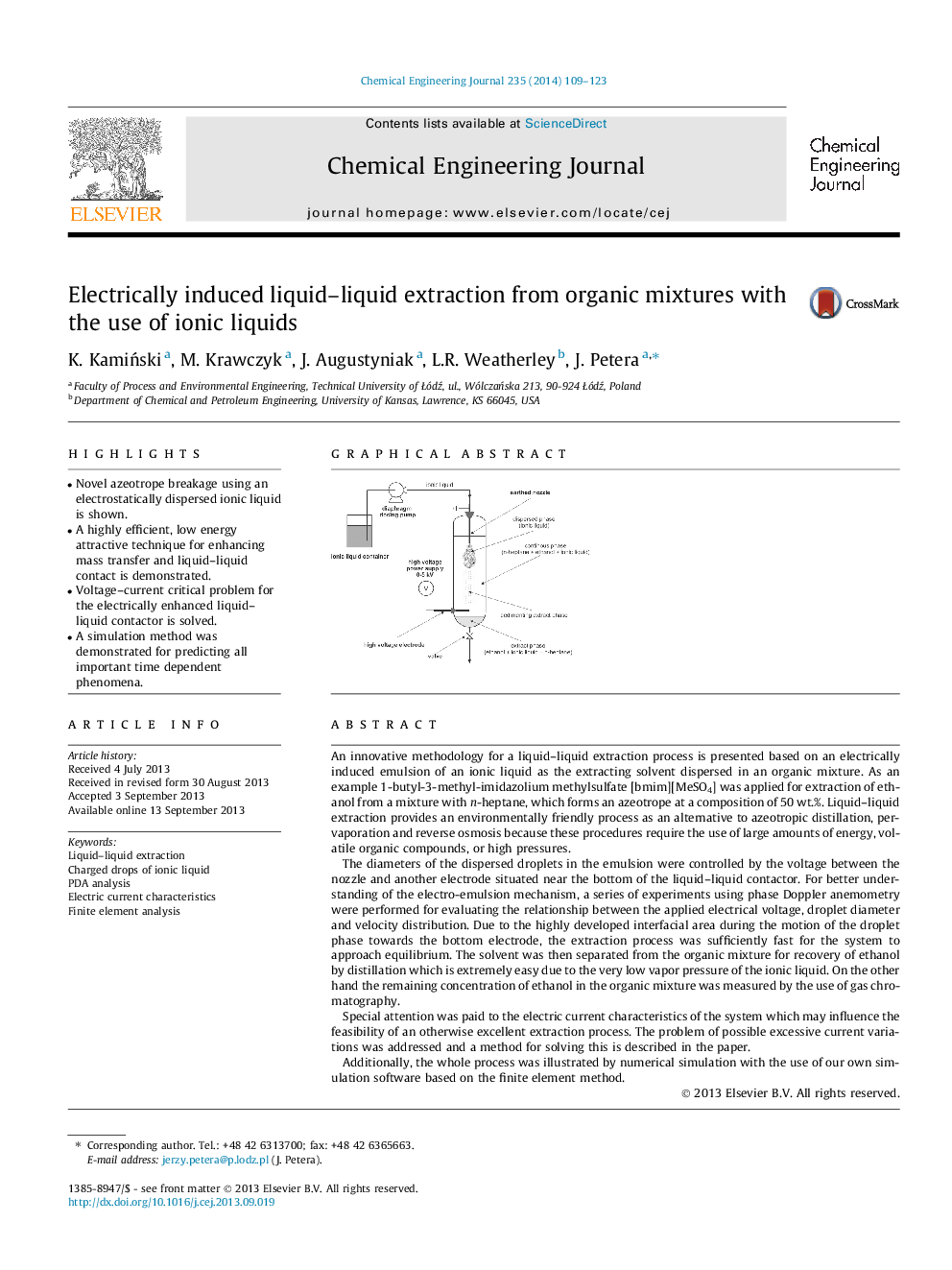| کد مقاله | کد نشریه | سال انتشار | مقاله انگلیسی | نسخه تمام متن |
|---|---|---|---|---|
| 148340 | 456409 | 2014 | 15 صفحه PDF | دانلود رایگان |
• Novel azeotrope breakage using an electrostatically dispersed ionic liquid is shown.
• A highly efficient, low energy attractive technique for enhancing mass transfer and liquid–liquid contact is demonstrated.
• Voltage–current critical problem for the electrically enhanced liquid–liquid contactor is solved.
• A simulation method was demonstrated for predicting all important time dependent phenomena.
An innovative methodology for a liquid–liquid extraction process is presented based on an electrically induced emulsion of an ionic liquid as the extracting solvent dispersed in an organic mixture. As an example 1-butyl-3-methyl-imidazolium methylsulfate [bmim][MeSO4] was applied for extraction of ethanol from a mixture with n-heptane, which forms an azeotrope at a composition of 50 wt.%. Liquid–liquid extraction provides an environmentally friendly process as an alternative to azeotropic distillation, pervaporation and reverse osmosis because these procedures require the use of large amounts of energy, volatile organic compounds, or high pressures.The diameters of the dispersed droplets in the emulsion were controlled by the voltage between the nozzle and another electrode situated near the bottom of the liquid–liquid contactor. For better understanding of the electro-emulsion mechanism, a series of experiments using phase Doppler anemometry were performed for evaluating the relationship between the applied electrical voltage, droplet diameter and velocity distribution. Due to the highly developed interfacial area during the motion of the droplet phase towards the bottom electrode, the extraction process was sufficiently fast for the system to approach equilibrium. The solvent was then separated from the organic mixture for recovery of ethanol by distillation which is extremely easy due to the very low vapor pressure of the ionic liquid. On the other hand the remaining concentration of ethanol in the organic mixture was measured by the use of gas chromatography.Special attention was paid to the electric current characteristics of the system which may influence the feasibility of an otherwise excellent extraction process. The problem of possible excessive current variations was addressed and a method for solving this is described in the paper.Additionally, the whole process was illustrated by numerical simulation with the use of our own simulation software based on the finite element method.
Figure optionsDownload as PowerPoint slide
Journal: Chemical Engineering Journal - Volume 235, 1 January 2014, Pages 109–123
